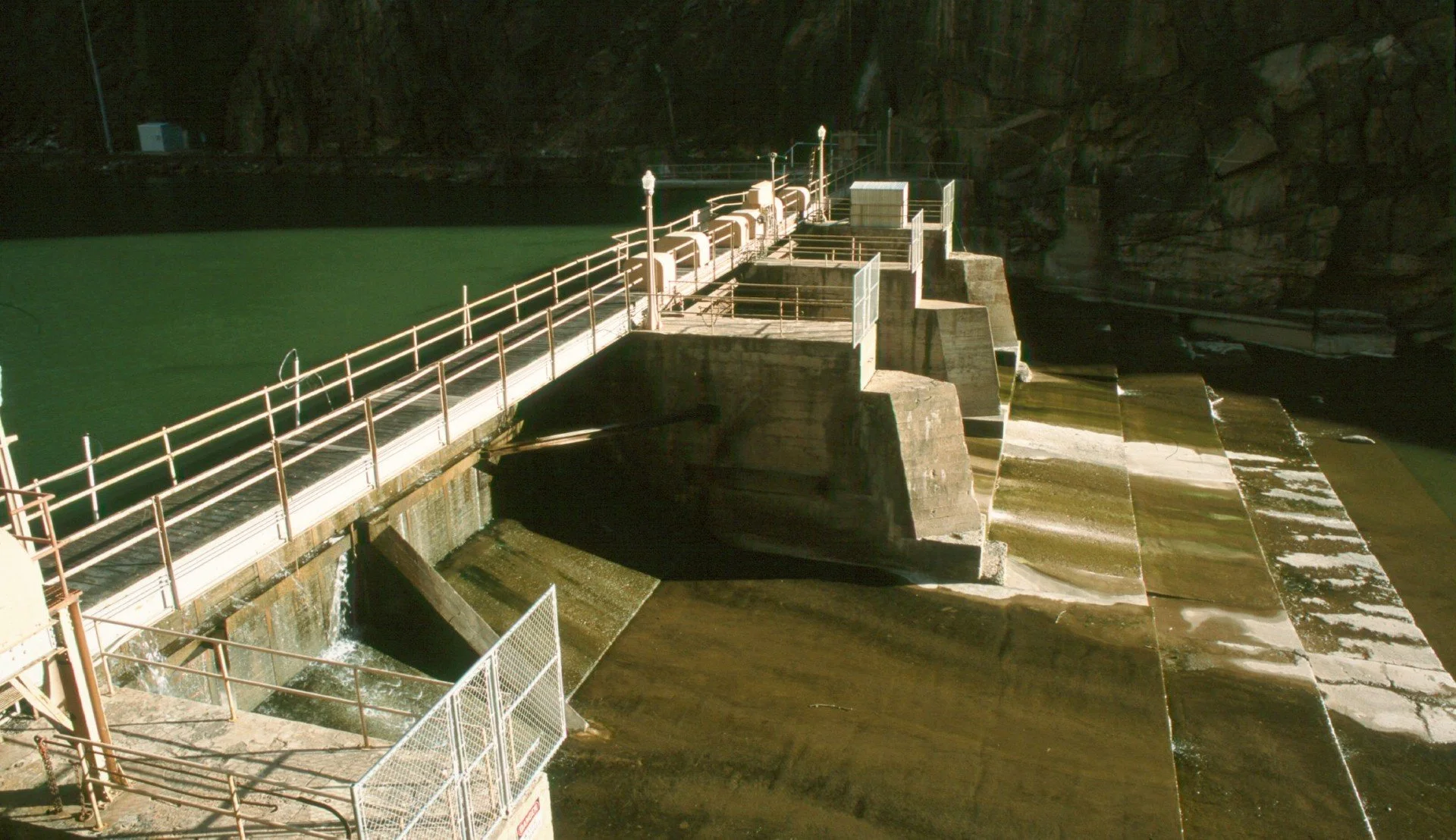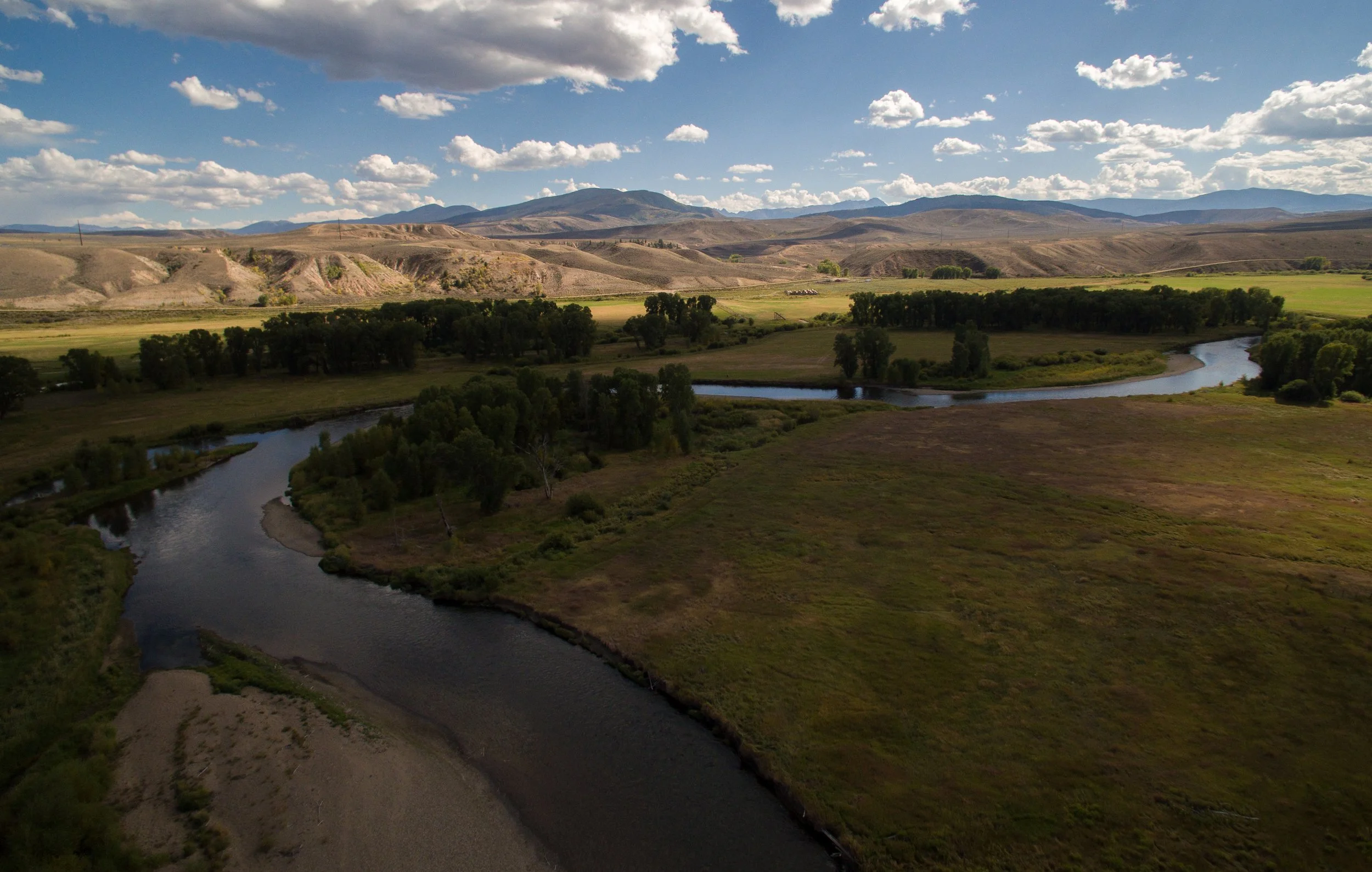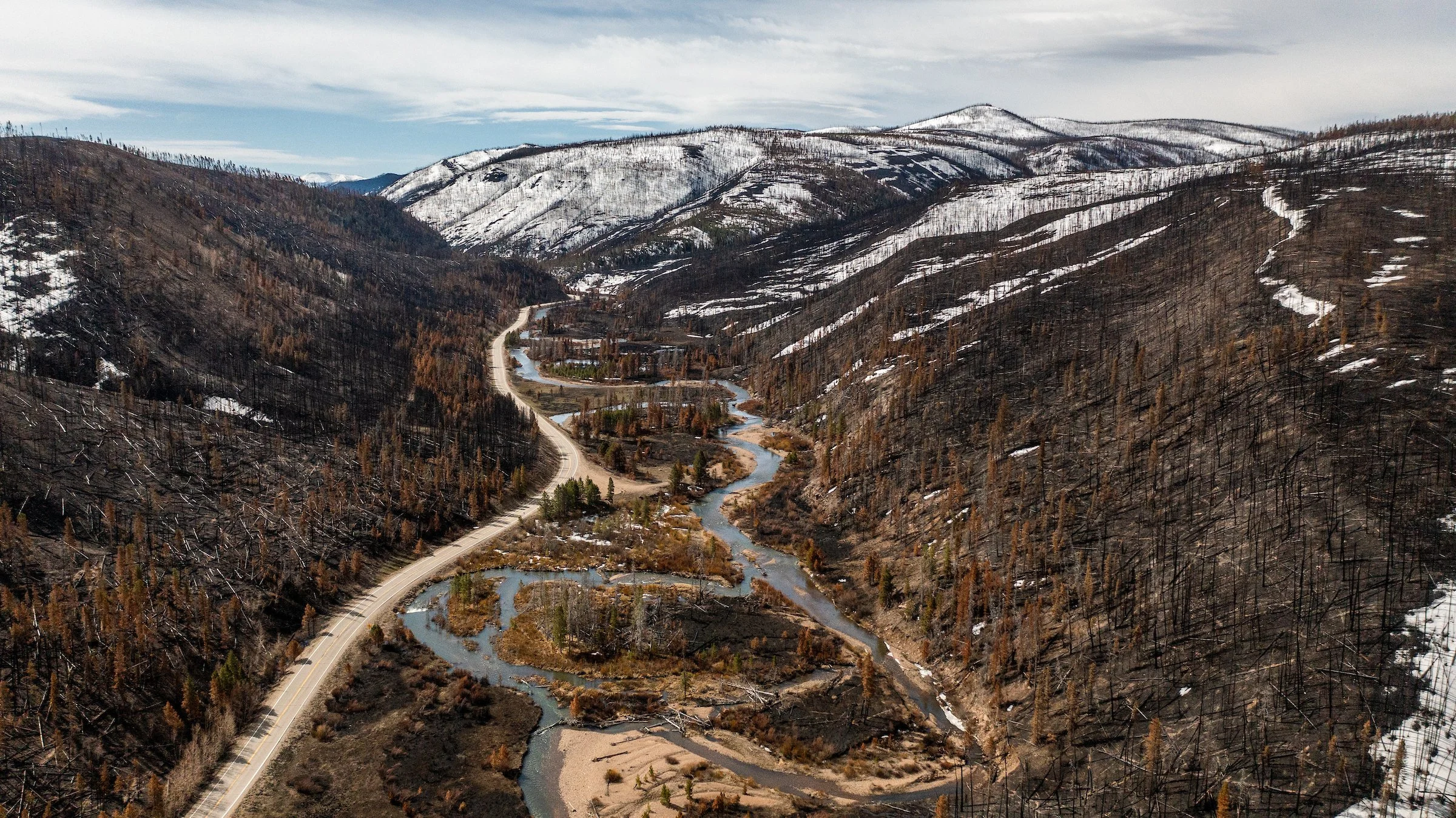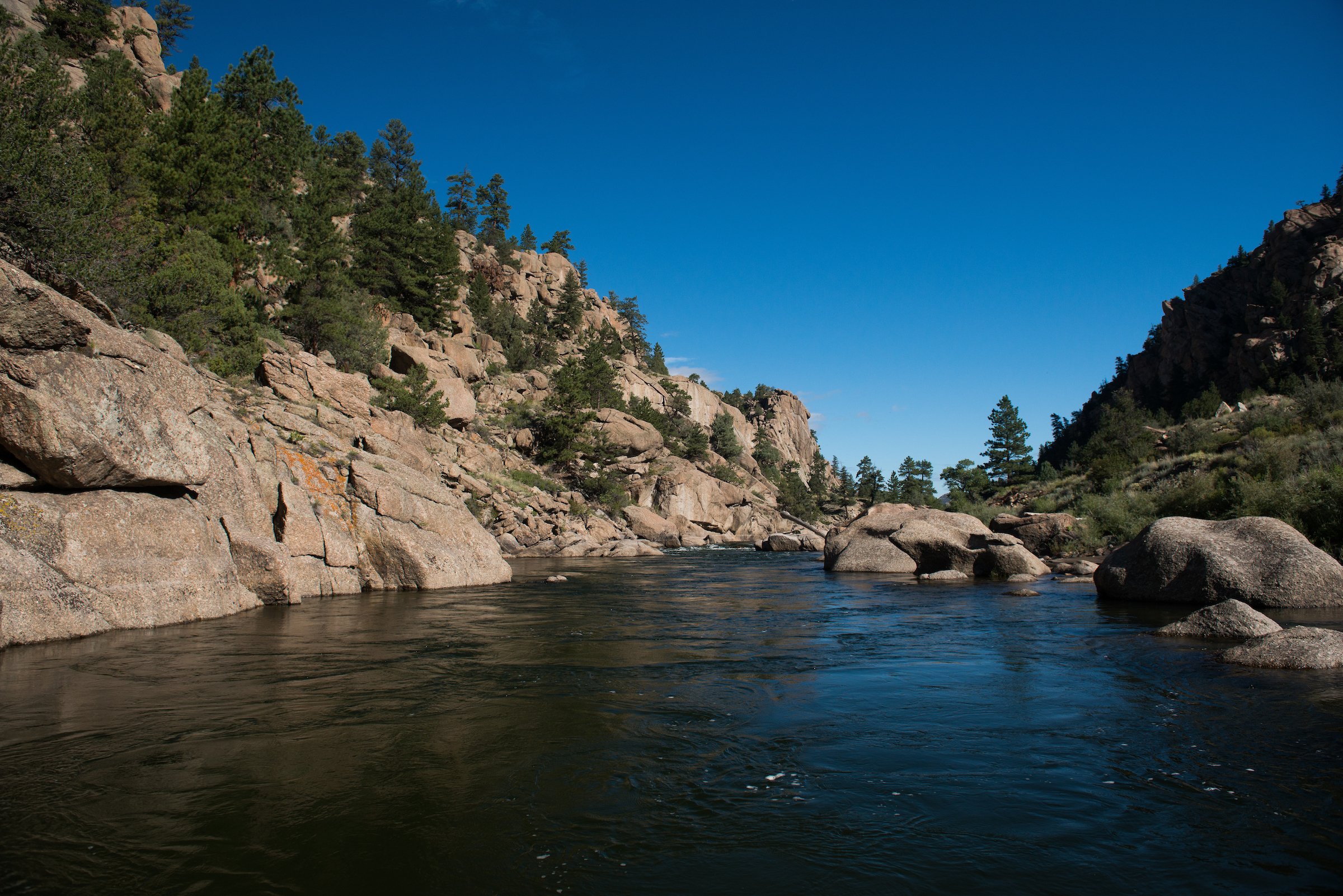Tell the BLM to Protect Trout Habitat in New Western Solar Plan
The U.S. Bureau of Land Management (BLM) recently released its draft plan for utility-scale solar siting on public lands in the western states. This plan is critical for our country to meet ambitious renewable energy goals, and we are encouraged by BLM taking a programmatic approach to determining which areas are open to development and which are not. However, siting of these projects can have a massive impact on trout habitat and must be done in a thoughtful manner.
Across the West, the draft plan could open up as much as 22 million acres to solar development. Here in Colorado, prospective areas available for project siting could overlap with nearly 117,000 acres of native and wild trout habitat, mostly in the western part of the state, including in the Colorado and Gunnison River basins.
The push for increased renewable energy production on public lands doesn’t need to come at the expense of native and wild trout. It is important for the BLM’s final plan to adopt programmatic level exclusions for trout habitat. In the draft plan, aquatic resources were not included in the BLM’s exclusion criteria.
We get one chance to get this right, and it is essential to balance resource management and conservation needs with new renewable energy demands on public lands. Go to the comment portal to any of the ‘Participate Now’ links and tell the BLM to adopt programmatic level exclusions for native and wild trout habitat in the final western solar plan. You can also submit comments via email at solar@blm.gov.
New Oil and Gas Protections for Thompson Divide
Contacts:
Jay Chancellor, Colorado Advocacy Campaigns Manager – jay.chancellor@tu.org
Steve Kandell, Director of the National Campaign Support Center – steve.kandell@tu.org
Nick Gann, Rocky Mountain Communications Director – nick.gann@tu.org
WASHINGTON, DC – The U.S. Department of Interior (DOI) and the U.S. Department of Agriculture (USDA) announced that nearly 225,000 acres of public land in the Thompson Divide has been withdrawn from all forms of mineral entry, appropriation, and disposal for the next twenty years.
“The Thompson Divide is home to the headwaters of some of Colorado’s most storied trout streams including the Roaring Fork, the Crystal, and the North Fork of the Gunnison,” said Jay Chancellor, Colorado Advocacy Campaigns Manager for Trout Unlimited. “Trout Unlimited has worked for over a decade to secure long-term protections for one of the largest expanses of roadless forest land in Colorado and we are encouraged by the Administration’s decision to prohibit new mineral development in this area for the next twenty years.”
The mineral withdrawal excludes all prospective oil and gas operations in Thompson Divide for a twenty-year period but recognizes pre-existing leases and allows those activities to continue. The public land order includes protection for the White River and Grand Mesa, Uncompahgre, and Gunnison National Forests – public lands that bring over 10 million visitors to the state each year. The 20-year withdrawal is authorized by the Federal Land Policy and Management Act, but only Congress can legislate a permanent withdrawal.
“This is a historic step in preserving critical habitat in one of the last wild places in Colorado. While permanent protections are still needed for the Divide, a twenty-year withdrawal will not only support fish and wildlife, but will also boost Colorado’s outdoor recreation economy, which generates over $37 billion in consumer spending annually,” said Steve Kandell, Director of National Campaign Support Center at Trout Unlimited.
Colorado TU Spring Meeting Set for April 26th - 28th in Salida
Join CTU in Salida April 26th through the 28th for the annual Spring Meeting! It’s a weekend filled with fun events, a Saturday board meeting, and a river cleanup. If you come on Thursday, the 25th, Collegiate Peaks chapter is co-hosting a showing of the International Fly Fishing Film Festival in Buena Vista.
Details:
Thursday, the 25th - Collegiate Peaks chapter is co-hosting a showing of the International Fly-Fishing Film Festival in Buena Vista at the Surf Hotel & Chateau at 7pm. You can see details (and reserve tickets) for the film showing at: https://www.flyfilmfest.com/buena-vista-co/
Friday Fishing, the 26th –Come for fishing on Friday the 26th and take a chance to chase the caddis or BWO hatches on the Arkansas.
Board Meeting location for Saturday April 27th will be at the Scout Hut, located in the town park in downtown Salida at address: 210 East Sackett Avenue, Salida, 81201. Full day on Saturday, with meeting starting 8:15 am and chapter sharing/lessons workshops in the afternoon till 5pm. Lunch will be in the meeting space.
Dinner Fri/Sat - TBD
Sunday Service Event - the Collegiate Peaks chapter is planning to participate in in the Keep Bewnie Buena clean event on Sunday April 28 – 1-3 pm. You can sign up here: https://www.buenavistarec.com/program/keeping-bewnie-buena/
Ask Your Representative to Protect Colorado's Wetlands and Waters - Vote YES on HB 24-1379
Speaker Julie McCluskie, with co-sponsors Senator Dylan Roberts and Representative Karen McCormick, has introduced state legislation (HB 24-1379) that would restore critical protections to Colorado’s at-risk wetlands and waters. The legislation was drafted in direct response to a U.S. Supreme Court decision last year to impose the biggest rollback of the Clean Water Act since its inception in 1972. The Court’s decision essentially eliminated protections for certain wetlands and other critically important waters, including streams that don’t flow consistently year-round.
Without state-level protections, many of Colorado’s critical wetlands and streams could be polluted, filled in, paved over, and destroyed without abiding by the Clean Water Act pollution control and mitigation requirements that have protected them for the past 50 years. Degradation of these wetlands and waterways can jeopardize fisheries, drinking water supplies, and other ecosystem benefits such as flood mitigation, wildfire resilience, and wildlife habitat.
HB 24-1379 will:
Restore protection for critical Colorado wetlands and waters undermined by last year’s Supreme Court decision;
Require impacts to be avoided, and only if they cannot be avoided, to be minimized and mitigated, with clear and consistent guidance for compensatory mitigation to ensure that watershed values and functions are maintained;
Establish a fair and transparent permitting process, including general permits that can streamline approval for classes of activities (such as restoration) that have no or minimal adverse impacts; and
Secure clear mechanisms for strong enforcement to protect Colorado wetlands and streams.
Colorado has lost about 50% of its wetlands to development since statehood, so protecting what remains is a necessity. Under the US Supreme Court decision, many of those wetlands could be lost or degraded, along with the approximately 24% of Colorado streams that run seasonally (intermittent) and 45% that flow only in response to rain or snow (ephemeral).
Please take a moment today to contact your State Representative and ask them to support HB 24-1379, and to oppose any amendments that would weaken its protection for Colorado’s wetlands and waters. You can use the provided email template to send your comments, including editing to incorporate your own personal experiences with Colorado wetlands, headwaters, and feeder streams.
Help Good Samaritans Restore Mine-Impaired Streams
Nationwide there are an estimated 500,000 abandoned mines - mines with no one remaining that is responsible for clean-up – 33,000 of which are known to be causing environmental damage. More than 110,000 miles of streams are listed as impaired for heavy metals and/or acidity, and abandoned mines are a major source of these impairments due to acid-mine drainage with toxic metals, such as mercury, lead and arsenic. Many willing partners could bring expertise and resources toward restoring these mines sites as Good Samaritan project managers, but are unable to do so because they could become liable for the underlying pollution from those mines - even though they were not responsible for creating the problem, only helping to improve it.
Under current law, Good Sams, including Trout Unlimited, can and do voluntarily undertake projects to clean up “non-point-source” abandoned mine pollution, such as moving contaminated waste rock piles away from streams. However, under the Clean Water Act, groups wanting to take on “point-source” mine cleanups—where toxic drainage is discharging directly from the mine opening —face daunting obstacles, including complicated permitting and long-term legal and financial liability for any remaining mine pollution. This has slowed Good Sam projects for such draining mines to a virtual standstill.
Fortunately, bipartisan leaders in the House of Representatives are working to enable Good Sams to tackle restoration without taking on such perpetual, open-ended liability. Representatives Maloy (R-UT) and Peltola (D-AK) have introduced bipartisan legislation – HR 7779, the Good Samaritan Remediation of Abandoned Hardrock Mines Act of 2024 – which would establish a pilot program for the Environmental Protection Agency to issue permits to qualified nonprofit groups and other third parties to tackle cleanups of abandoned mine sites, in part by providing targeted, limited liability protection. Permits would make Good Sams responsible for their own actions and for completing cleanup work to the standards in their permits – but shield them from the large and perpetual liability for the mine’s pollution itself. This legislation mirrors a bill in the Senate that has 33 bipartisan cosponsors, including Senators Bennet and Hickenlooper.
The challenge of abandoned mines is very significant for Colorado. A study by the State Division of Reclamation Mining and Safety showed over 250 draining mines in Colorado with 148 likely degrading downstream water quality. The pilot program represents a vital first step in empowering Good Sam partners to help address these sites and improve water quality for the benefit of fish, wildlife, and downstream communities.
Please ask your Representative to support HR7779 and to cosponsor this bipartisan, common-sense legislation to help watersheds in Colorado and across the nation. You can use our email template to share your comments, and customize your note if you wish by adding reference to specific waters that are important to you.
The New Spring Issue of High Country Angler is Live!
Your new Spring 2024 issue of High Country Angler is here!
Check out the Spring 2024 issue of High Country Angler e-zine, including these stories:
Landon Mayer talks about identifying trout ‘paddles’ with Tails Up Tips;
Brian LaRue goes international with Costa Rican Jungle Tarpon Adventure;
Colorado TU Staff celebrates its annual River Stewardship Gala and the honoring of Bob and Suzanne Fanch with Protecting the Headwaters;
Jackson Temme writes about the Costa 5 Rivers program with CU Boulder Club Highlight;
Peter Stitcher with How to Master the Davy Knot;
Other columns by Hayden Mellsop, Joel Evans, Greg Hardy, Celia Sheneman, and the Old Professor!
March 2024 Currents
THIS MONTH’S ISSUE OF CURRENTS FEATURES Speaking for Trout, Protecting the Headwaters, Restoring the Kawuneeche Valley, and More!
Restoring the Kawuneeche Valley
Trout Unlimited Joins Collaborative Effort in Rocky Mountain National Park
By Celia Sheneman
If you have ever driven over Trail Ridge Road through Rocky Mountain National Park, then you have probably enjoyed the serenity and scenery of the beloved Kawuneeche Valley, which lies just inside the Grand Lake entrance to the Park. The headwaters of the Colorado River flow through this landmark valley at the start of its epic journey to Mexico. The Valley is a vital part of the Upper Colorado River watershed, playing significant roles in flood mitigation, drought mitigation, and wildlife habitat. Once a lush, percolating riparian wetlands teeming with birds, bugs, trout, and beaver split by a meandering stream that frequently flooded the meadow, the Valley has now lost more than 75% of its tall willows and with that the beavers that sustained its wetlands. What was once a wet beaver-willow ecosystem is now largely an elk-moose grassland.
In 2020 Rocky Mountain National Park, the Arapaho-Roosevelt National Forests, Northern Water, the Colorado River District, Grand County, and the Town of Grand Lake formed an inclusive collaboration to study and rejuvenate this picturesque and critical gateway. The Kawuneeche Valley Restoration Collaboration (KVRC) goal is to achieve long-term benefits of a healthy environment including improved water quality, wildlife habitat, and aesthetic and recreational value. Now TU has joined this group effort to work to return the Kawuneeche Valley to its status as a vibrant and diverse ecosystem.
KVRC has engaged Colorado State University to perform an assessment of the watershed and to make recommendations for potential pilot restoration sites. Four potential sites with high chances of success and cost-effective ecosystem restoration have been identified. These initial sites are within Rocky Mountain National Park and include Beaver, Baker, Bowen, and Onahu Creeks. Going forward, KVRC is striving to implement a variety of restoration projects on public lands in the Valley and surrounding private lands that could include strategies such as planting willows/riparian vegetation, installation of beaver dam analogs, restoration of abandoned ditches, levees and dams, and temporary fencing to allow recovery of vegetation. CTU joined this group with plans to participate in field projects that align with TU's mission and bringing resource support and volunteers for execution of field projects. Additional participants include Rocky Mountain National Park, US Forest Service, the Colorado River District, Grand County, Town of Grand Lake and the Colorado Water Conservation Board.
As assessment results are evaluated and the new pilot projects are implemented, look for more news on TU’s involvement and engagement as well as opportunities for TU members to participate in the KVRC to renew the riparian home of the headwaters of the Colorado River!
Celia Sheneman is a Director at Large for Colorado Trout Unlimited and represents CTU with the KVRC.
CWCB Issues $17.4 Million in Colorado Water Plan Grants
TU and Allies Partner on More than $5.7 Million of Collaborative Projects Funded
On March 13, the Colorado Water Conservation Board (CWCB) approved 52 Water Plan Grant applications today, which will distribute $17.4 million to fund critical projects to manage and conserve water, improve agriculture, promote watershed health, spark collaborative partnerships, and much more.
Among the approved Water Plan Grant projects were $3.28 million in projects being managed by Trout Unlimited in Colorado:
A $1.5 million collaboration with agricultural users on Elk Creek, a key spawning tributary to the middle Colorado, to modernize infrastructure to improve its reliability for irrigators while improving efficiency and opening up more than 7 miles of habitat to fish passage;
A $287,000 partnership with ag users on nearby Canyon Creek, which will have similar diverse benefits including opening 1.5 miles of spawning habitat to fish passage;
A $1 million collaboration coordinated by the Boulder Flycasters to advance design and permitting for multiple diversion structures along South Boulder Creek, helping set the stage for restored fish passage, improved habitat, and the ability to shepherd low flow releases through the system to maintain winter flows; and
A $491,000 collaborative pilot project and study with NTU staff partnering with irrigators in western Colorado to evaluate productivity and drought resilience for alternative forage crops that consume less water.
The CWCB also approved a $100,000 Water Supply Reserve Fund grant to the Dolores River Anglers chapter of TU in support of collaborative restoration work on the West Fork Dolores, a part of the chapter’s ongoing partnership with local water users and the Dolores Water Conservancy District, the US Forest Service, Colorado Parks and Wildlife, and other local stakeholders to improve watershed health and resilience in the face of a changing climate.
Along with these TU-led partnerships, projects in which TU is collaborating with efforts led by other conservation and water management allies accounted for another nearly $2.5 million in Water Plan grants – including efforts to benefit the Colorado headwaters (Learning by Doing and the Kawuneeche Valley Restoration Coalition), the Purgatoire River (Purgatoire Watershed Partnership), and the Conejos River (Colorado Rio Grande Restoration Foundation).
“When the Colorado Water Plan was developed and later revised, we saw its potential for encouraging multi-benefit projects and collaborations, and helping to conserve the health of rivers and watersheds,” said David Nickum, Colorado TU Executive Director. “The diverse range of cooperative projects that CWCB has funded this year are a great illustration of how the plan is delivering those real benefits to Colorado.”
“Water is on the top of many Coloradans’ minds. And the projects this program funds are critical to meet and mitigate our state’s most critical water challenges,”said Lauren Ris, CWCB Director.“We received significantly more applications than we had funding for this cycle of Water Plan Grants, showing just how much demand there is for this important funding, and how critical it is that we continue to fuel this effort.”
Every year, the Water Plan Grant Program provides millions of dollars of funding for projects in five key categories: Water Storage & Supply, Conservation & Land Use, Engagement & Innovation, Agricultural Projects, and Watershed Health & Recreation. Water Plan Grants support the Colorado Water Plan, and funded projects are wide-ranging and impactful to the state, focusing on enhancing water infrastructure, restoring ecosystems, supporting education and community collaboration, boosting water conservation and efficiency, guiding resilient land use planning, and more.


















